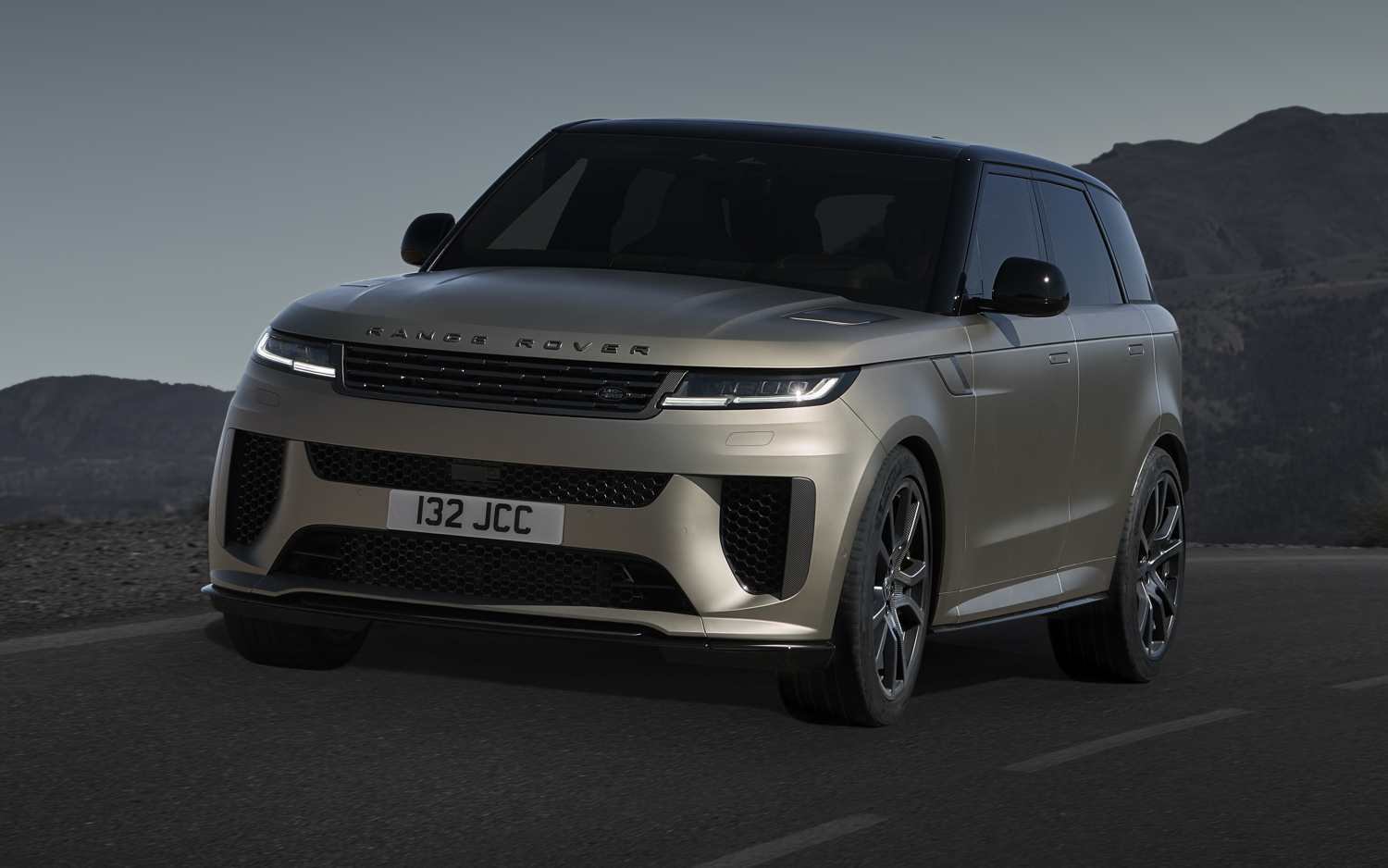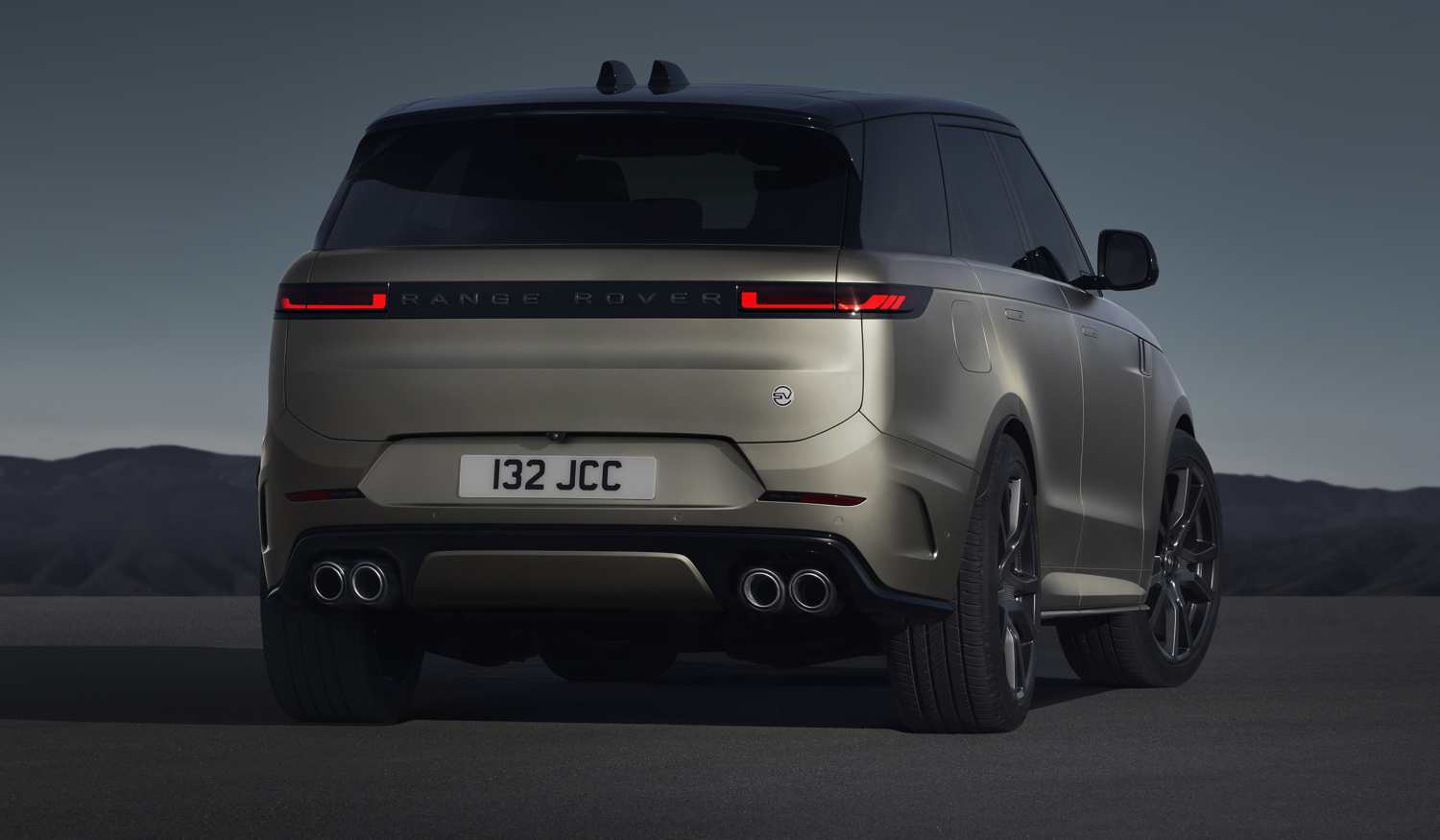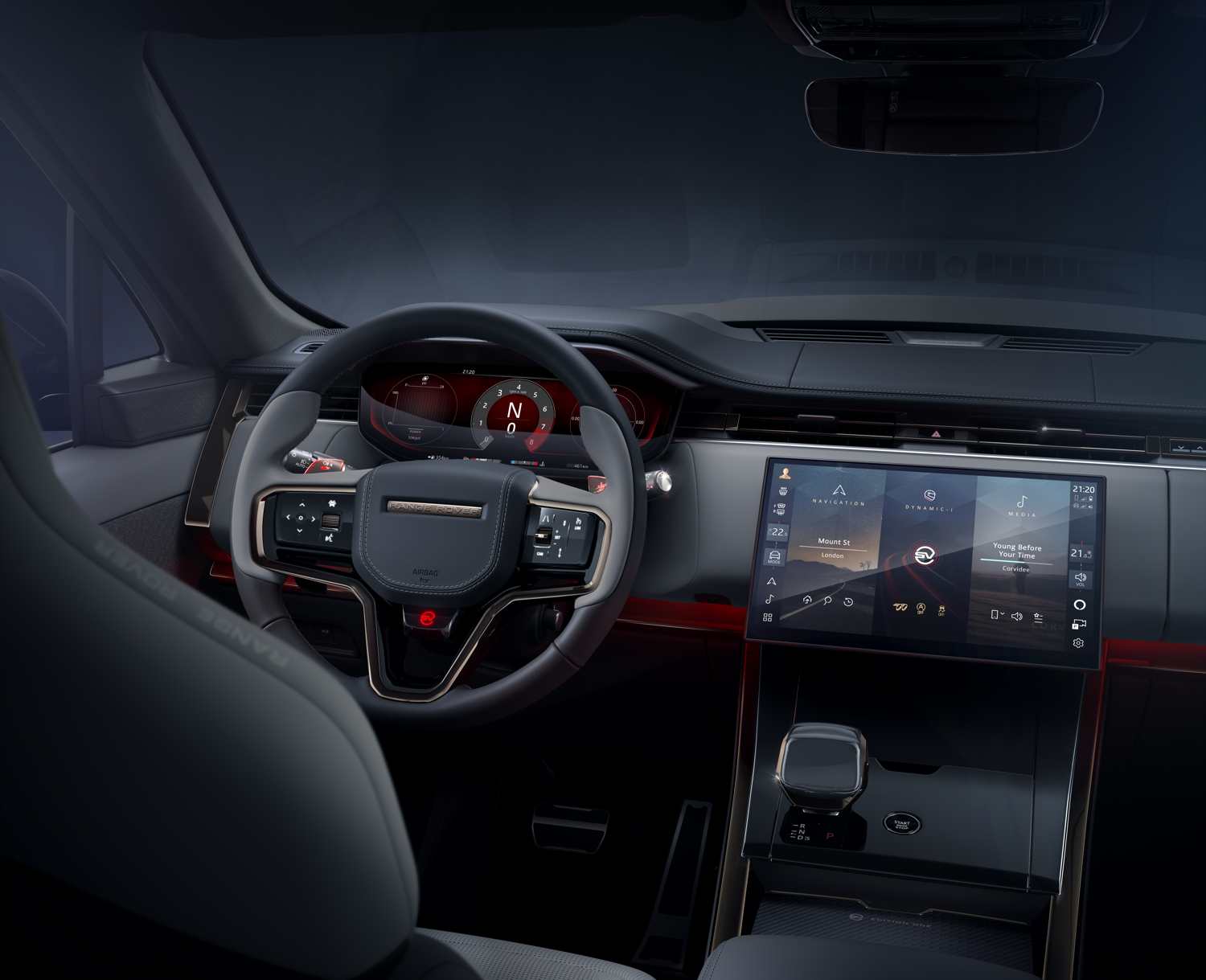Range Rover Sport SV is introduced as the most powerful model ever in the line-up.
The Range Rover Sport’s performance flagship SV has arrived as the fastest and most powerful production Range Rover yet, offering supercar performance at 2560kg thanks to a 467kW 4.4-litre V8.
Called the SV – dropping the ‘R’ suffix of the previous car – it is the latest project from JLR’s Special Vehicles team and is “the most dynamic and technologically advanced” version of the sports SUV yet.
The new Range Rover Sport SV Edition One is available to order now in Australia, priced from $360,800 before on-road costs and with first deliveries expected from Q4 2023.
Based on the latest-generation Range Rover Sport, the new halo SV is one of Land Rover’s final new combustion cars. JLR, under its Reimagine transformation plan, will launch a Range Rover EV next year, before the Land Rover Discovery Sport, Range Rover Sport, Evoque and Velar go electric from 2025.
Pushing out 467kW from a 4.4-litre BMW-sourced engine, which is twin-turbocharged and mildly hybridised, the SV trumps the previous SVR’s 404kW, achieved from a supercharged 5.0-litre V8.
With peak torque of 750Nm (briefly available under launch control conditions), the SV can go from 0-100km/h in 3.8sec, and all the way to 290km/h. It drives four wheels via an eight-speed automatic transmission. There are subtle design changes over the P530 model, including wider front and rear tracks, increased camber, a new front bumper and grille treatment, side skirts, and a rear bumper with four round exhausts said to be more “honest” than the previous SVR’s square tailpipes.
The new front treatment is partly necessitated by the increased cooling requirements of the V8 engine – and the brakes. For the first time on a Land or Range Rover, Special Vehicles is offering carbon-ceramic brakes with eight-piston calipers – standard on the limited-run launch-edition model – as well as the first carbonfibre wheels in 23-inch offered by an OEM.
Fitted with the optional carbonfibre wheels (saving 36kg) and carbon-ceramic brakes (34kg lighter), the car’s unsprung mass is reduced by 70kg over the regular Sport, says Special Vehicles. With standard cast-iron rotors and forged alloy wheels, also 23-inch, the car’s unladen weight is 2560kg.
A carbonfibre bonnet is also optional, as is carbonfibre or carbon-look detailing both inside and outside. The front splitter is customer-removable to improve the car’s approach angle and it retains Land Rover’s off-road-centric Terrain Response system.
The towing capacity is the same 3500kg as the standard Sport. The chassis is a development of the P530 model’s, although it sits 10mm lower.
Like all current Sports it features air suspension, but making its debut on the SV is a linked hydraulic system. Unlike other hydraulic damping set-ups such as those on McLarens, the unit isn’t just diagonally linked across the car but also directly linked left-right, and front-rear, to help contain both pitch and roll movements.
As a result, there are no mechanical anti-roll bars and, says Special Vehicles, the system is incredibly powerful. An active 48V mechanical anti-roll bar system is claimed to be able to put a total force of 1600Nm into roll control.






